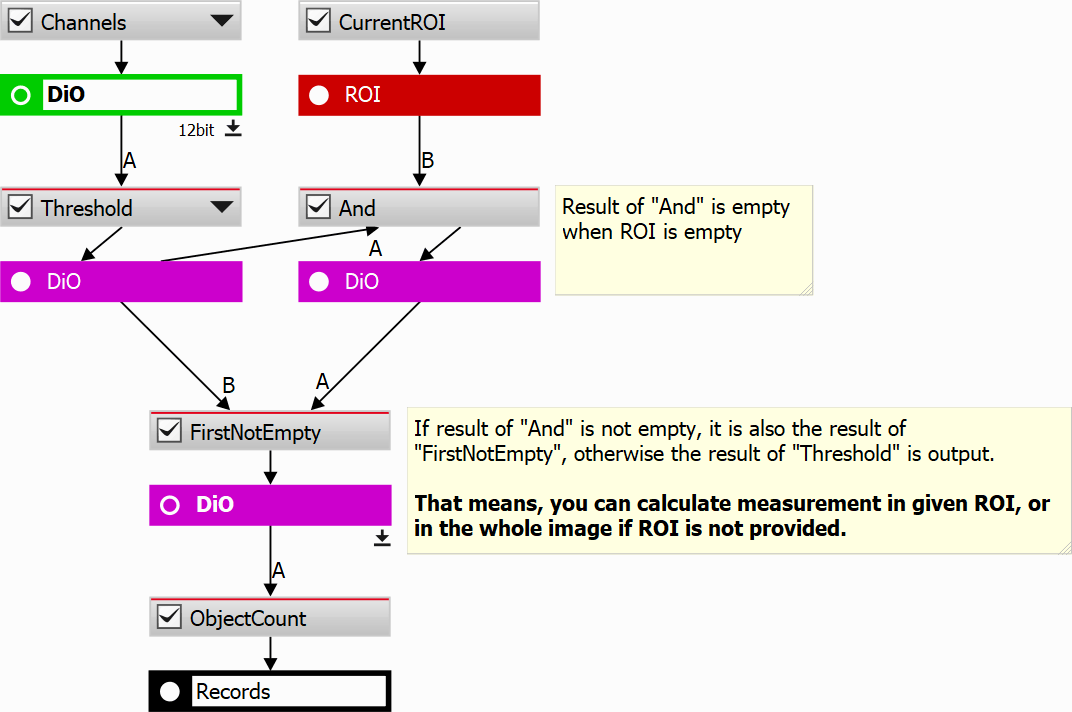true positives (TP) matched correctly,
false positives (FP) incorrectly segmented objects and
false negatives (FN) incorrectly missed objects.
Creates an intersection of the two connected binary results.
Creates an intersection of the more than two connected binary results.
Union of more than two connected binary results is shown.
Non-Equivalence operation is performed on the two connected binary results.
Non-Equivalence operation is performed on more than two connected binary results.
Displays subtraction of the connected binary result (A) from the result (B).
Equivalence operation is performed on the two connected binary results.
Only the objects from the connected binary result (A) being inside or touching the result (B) are shown.
Only the objects from the first connected result not being inside or not touching the other connected result are shown.
Returns the first not empty binary layer from the parameters, see the example below.
Only the area without the connected binary result is shown.
Compares the ground truth binary layer (A) and the predicted binary layer (B) generated by segmentation using AI. It pairs the objects from both layers, classifies them (based on IoU threshold) and visualizes them as new binary layers:
Defines the threshold of quantity:
.
 Binary operations
Binary operations

